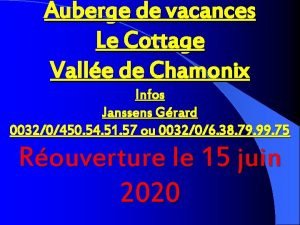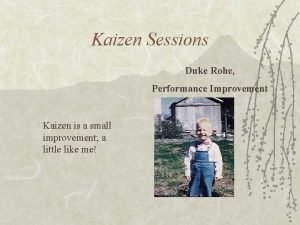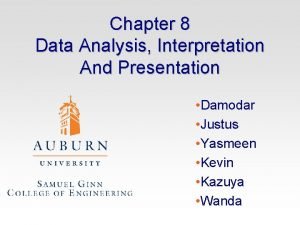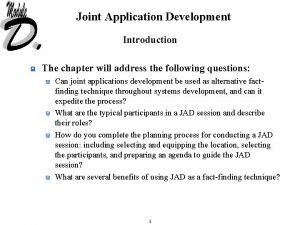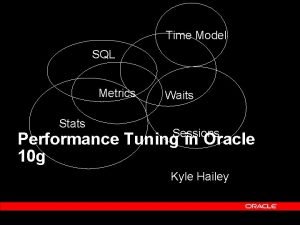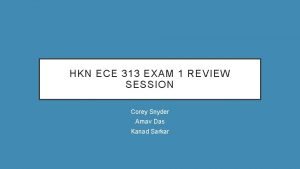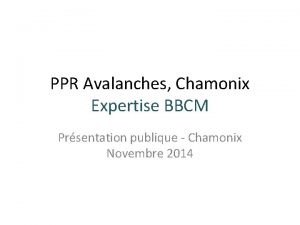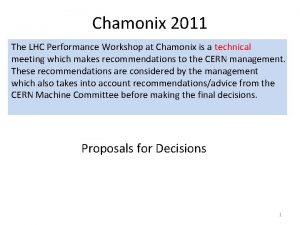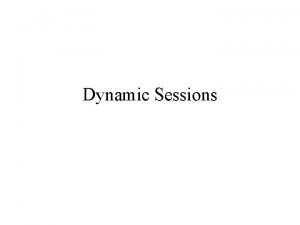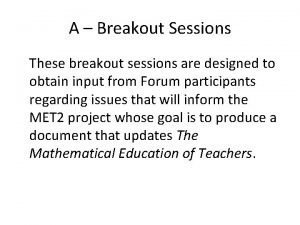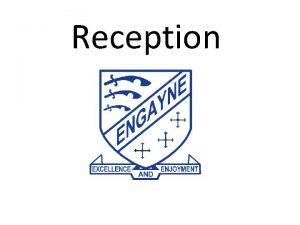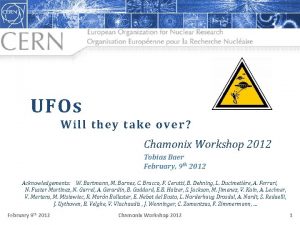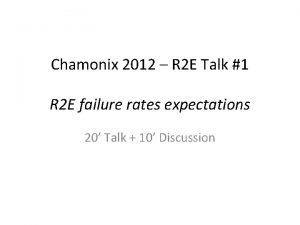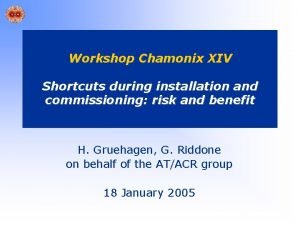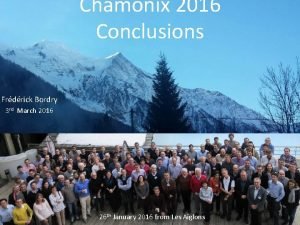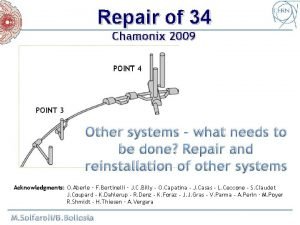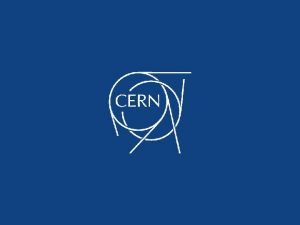Chamonix 2012 Sessions 3 4 Strategy for 2012

































![Summary òLdt/Lpeak/Pile-Up @ 3. 5 Te. V [fb-1/1033 cm-2 s-1/e. p. c. ] òLdt/Lpeak/Pile-Up Summary òLdt/Lpeak/Pile-Up @ 3. 5 Te. V [fb-1/1033 cm-2 s-1/e. p. c. ] òLdt/Lpeak/Pile-Up](https://slidetodoc.com/presentation_image/a50195351def176215bd3387ed1f8199/image-34.jpg)







- Slides: 41

Chamonix 2012 Sessions 3 & 4 Strategy for 2012 Chairs: Jörg Wenninger & Oliver Brüning Scientific secretaries: Rogelio Tomás & Laurette Ponce

Sessions 3 & 4 - Strategy for 2012 n n n 9/30/2020 Experiments expectations, plans and constraints – B. Gorini Turn-around improvements – S. Redaelli Performance reach of the injector complex – R. Steerenberg Running the RF at higher energy and intensity – P. Baudrenghien Transverse damper – W. Hoefle R 2 E failure rates expectations – M. Brugger Beam Energy in the LHC for 2012 – A. Siemko Optics Options for the 2012 proton run – M. Giovannozzi Collimator Settings and Performance – R. Bruce Performance Reach in the LHC for 2012 – G. Arduini MD Plans for 2012 – R. Assmann Ions in 2012 – J. Jowett LHC 8: 30 meeting

Change in personnel Emilio The CERN management could not find any other brilliant 20 -fingered physicist So it went for two “standard” ones Benedetto 7 -Feb-12 Experiments desiderata 3

Machine parameters q β* configuration: – ATLAS and CMS: – LHCb: as small as possible. 3 m - no change wrt 2011. Compatible with the inclined crossing. Provides a factor >= 2 for leveling. – Alice: from 10 m to 3 m. Allow satellite-main filling scheme with natural satellites. q Bunch length: – Increasing bunch length by up to ~10% would be acceptable Recommendation: fix the ideal length before the start of physics and keep it stable 7 -Feb-12 Experiments desiderata 4

Spacing and pileup in 2012 q Experiments support 50 ns separation as a default scenario. – Provide as much integrated luminosity as possible (>= 15 fb-1). – Request to provide 5 fb-1 for ICHEP ( for first week of June). q No real show-stopper expected up to peak pileup of 30 but: – Detailed analyses still ongoing: if hard limits are identified, will need to investigate ways to cap the pile-up (lower bunch charge, lumi-leveling), even at the expense of some luminosity – For the longer term 25 ns remains the preferred scenario Plan sufficient MDs to establish 25 ns feasibility q ATLAS requests 10 h of low pile up with a total of 10 million events. 7 -Feb-12 Experiments desiderata 5

Heavy ions q The default plan for 2012 is to take data with p-Pb collisions only – ALICE requests both p-Pb and Pb-p beam setups. – Still unclear if ALICE will also need polarity reversals for both setups q Energy of p-Pb – Most likely the request will be to run at equivalent proton energy of 3. 5 Te. V, but 4 Te. V is still being considered q Beam optics – Target is smallest β* for ALICE, ATLAS and CMS q LHCb will also join the run for the p-Pb part – β* most likely 3 m, filling schemes to be defined. q Luminosity target for 2012 – Expected luminosity ~3 x 1028 cm-2 s-1 – Integrated L of 30 nb-1 is a realistic target 7 -Feb-12 Experiments desiderata 6

High beta q Two physics goals – Diffractive physics at β*=90 m (mainly TOTEM) – Highest β* to approach Coulomb interference region for elastic scattering q Only one physics run can be supported within the present schedule – Tentative proposal is to go for a mixed setup with 90 m in IP 5 and 500 m in IP 1 7 -Feb-12 Experiments desiderata 7

Recap. : operational cycle Beam charge (example for ions) Dump Time-functions for settings of (1) ramp, (2) squeeze(s), (3) collisions, (4) pre-cycle (without beam). Magnet current [A] Discrete (“actual”) settings for: (1) injection, (2) prepare ramp, (3) flat-top, (4) adjust (end of squeeze), (5) stable beams. Turnaround time Remark: Machine recovery after dump at top energy full yin the shade of the precycle → analysis starts from injection S. Redaelli, Cham 2012, 07 -02 -2012 8

Comparison 2010 -2011 by mode (I) 2010 2011 1. Injection still drives the time to go back in physics 2. Nevertheless, the process was improved in 2011! On average we gained 1. 4 h with respect to 2010 (larger nb)! S. Redaelli, Cham 2012, 07 -02 -2012 2010: averages over last ~30 fills; 2011: all proton fills since mid-May 9

Ramp to 4 Te. V & Squeeze in 2012 Same optics and dipole parameters as 2011 give ramp duration of 770 s (4 Te. V) Remove decay plateau at top energy 770 s 680 s 1020 s 1400 s Move Q’ correction from lattice sextupoles to spool correctors. 2012, 4. 0 Te. V 0. 6/3. 0/0. 6/3. 0 m Squeeze in 819 s (4 Te. V, 0. 6/3. 0/0. 6/3 m) Improved feed-forward strategies S. Redaelli, Cham 2012, 07 -02 -2012 819 s 10

2012 parameter table (protons) Parameter Value at 450 Ge. V Value at top energy Energy [ Ge. V ] 450 4000 β*IP 1/5 [ m ] 11. 0 0. 6 β*IP 2 [ m ] 10. 0 3. 0 β*IP 8 [ m ] 10. 0 3. 0 Parallel separation [ mm ] 2. 0 0. 67 Crossing angle IP 1/5 [ μrad ] 170 145 Crossing angle IP 2 [ μrad ] 170 90+ Crossing angle IP 8 [ μrad ] 170 (H) Ramp duration [ s ] Squeeze duration [ s ] Collision BP duration [ s ] S. Redaelli, Cham 2012, 07 -02 -2012 100 (V) 2010: 1020 → 770 2010: 548 (1. 0 m) → 819 (0. 6 m) 2010: 56 → 56 11

PERFORMANCE REACH OF THE INJECTOR COMPLEX IN 2012 Injector performance in 2011 LHC 25 (DB) LHC 50 (SB) LHC 50 (DB) Final Operationally Produced Characteristics 2011 Ip / ring [x 1011] 16 24 10 PSB extraction PS extraction SPS extraction ɛh and ɛv nb nb Ip / bunch ɛh and ɛv ɛlongit 11 11 [mm ∙ mrad] batches bunches [x 10 ] [mm ∙ mrad] [e. Vs] 1σ, norm. 2. 5 2 4 + 2 1. 3 2. 5 72 1. 1 5 3. 5 0. 7 3. 5 1 3 x 2 1. 75 3. 5 36 1. 45 3. 5 ≤ 0. 8 1. 4 2 4 + 2 1. 6 36 1. 5 1. 9 ≤ 0. 8 nb bunches 1 - 4 x 72 1 - 4 x 36 Once the double batch 50 ns beam was taken by the LHC the performance was pushed throughout the injector chain: Gradual intensity increases resulted in ~30% more than anticipated Keeping the transverse emittances as small as possible (+27%) The 25 ns beam was for the first time produced within nominal specifications. Rende Steerenberg, CERN Switzerland LHC Performance Workshop, 7 February 2012, Chamonix 12

PERFORMANCE REACH OF THE INJECTOR COMPLEX IN 2012 Possible gains Performance of the 4 booster rings is not the same ! Since the PS beam is assembled from 2 PSB cycles using 4+2 rings, we could move to a 3+3 rings scheme and use the best rings ! A schema with 3 injections 2+2+2 rings could be tested, but possible issues with beam stability at injection in the PS & even longer SPS cycles. Requires setup of completely new cycles. Courtesy of PSB team Diagnostic and solution to be assessed prior to LS 1 Rende Steerenberg, CERN Switzerland LHC Performance Workshop, 7 February 2012, Chamonix 13

PERFORMANCE REACH OF THE INJECTOR COMPLEX IN 2012 More advanced ideas A batch compression scheme, presented at Chamonix 2011: Smaller transverse emittances for similar intensities. Based on harmonic 9 at PS injection followed by batch compression and splitting. Will become available to the PS and SPS later in 2012. LHC can most likely not profit from this new scheme before the end of the 2012 run But tests in the fall not excluded ! Rende Steerenberg, CERN Switzerland LHC Performance Workshop, 7 February 2012, Chamonix Courtesy of H. Damerau and S. Hancock 14

PERFORMANCE REACH OF THE INJECTOR COMPLEX IN 2012 Tentative 2012 Injector Performance It will be a slow process of small increases and careful adjustments. LHC 25 (DB) LHC 50 (DB) Tentative Operational Characteristics 2012 Ip / ring [x 1011] 16 11 PSB extraction PS extraction SPS extraction ɛh and ɛv nb nb Ip / bunch ɛh and ɛv ɛlongit 11 11 [mm ∙ mrad] batches bunches [x 10 ] [mm ∙ mrad] [e. Vs] 1σ, norm. 2. 5 2 4 + 2 1. 3 2. 5 72 1. 1 5 3. 5 0. 7 1. 6 2 4 + 2 1. 8 1. 9 36 1. 6 2 ≤ 0. 8 nb bunches 1 - 4 x 72 1 - 4 x 36 Might already not be compatible with SPS NA operation No NA physics during preparation, filling and MD’s ? Rende Steerenberg, CERN Switzerland LHC Performance Workshop, 7 February 2012, Chamonix 15

RF : new longitudinal blow up 16 The first trial of the new blow-up, with Ions at 3. 5 z Te. V was very First with B 1. conclusive: regular bunch lengthening, equal for alltrial bunches Too aggressive! Ramping without blow up Reduced noise power tried with B 2. Very smooth and linear effect without feedback from bunch length Same effect on all 358 bunches Bunch length mean (top) and b-by-b Beam 2 (bottom), 358 bunches Chamonix 2012 Feb 7, 2012

RF : higher beam energy and intensity 17 In 2012 the RF group plans the following upgrades � � � Further reduction of capture losses with the longitudinal damper. Modification of the blow-up method. Batch per batch blow-up at injection reduces transverse emittance blowup by IBS (~10% in 30 minutes!) Thanks to the longitudinal blow-up, the stability is independent on the energy. Operation at 4 Te. V should not cause problems. RF has not seen the single bunch int. limit, circulated 3 E 11 ppb. RF can deal with nominal total intensity (2808 b, 25 ns, 1. 1 E 11). Chamonix 2012 Feb 7, 2012 Increasing bunch length helps for heating effects but in

ADT through the cycle Fully ready in 2012 20% emittance growth, gain dependence? 7. 2. 2012 W. Hofle @Chamonix 18

ADT with 50 ns spacing 40 turns, 1/40 = 0. 025 1. 2 x 1011 per bunch 50 ns spacing well under control with damper. 25 ns requires attention 7. 2. 2012 instability calculation by N. Mounet W. Hofle @Chamonix 19

Bunch excitation and loss maps n Loss maps with ADT blow up validated in MD in 2011. >> to be made operational during startup of 2012. >> large gain in time for loss maps. 3 rd order resonance damper (ADT blow-up) loss map 7. 2. 2012 W. Hofle @Chamonix 20

R 2 E expectations for 2012 x. Mas-Mitigation crucial: patch, shielding, relocat. Patches to continue during 2012 Particular emphasis (analysis) of ‘new’ failures R 2 E Failure Rates Expectations 21 February 7 th 2012

A. Siemko, Chamonix 2012, Session 4 7/02/2012 Status of SC cable splice resistances in LHC 22 NO CHANGES OBSERVED! 2011 Top 30 list: Rspl, max>1. 2 nΩ Rspl, max = Rsegment - (n-1)·Rspl, average 2010 Dipole Buses 2010: 304± 85 pΩ 2011: 303± 82 pΩ (*) Rspl, max = Rsegment - (n-1)∙Rspl, average Quad Buses 2010: 303± 309 pΩ 2011: 305± 309 pΩ

23 1 quench/month A. Siemko, Chamonix 2012, Session 4 7/02/2012 What is the envisaged maximum beam energy? • If during 2012 the number of high current quenches stays below 5 -6 then we have the same probability of burn-out as during 3. 5 Te. V run in 2011 with 40 quench limit No show-stoppers from equipment point of view to operate LHC in 2012 at maximum beam energy of up to 4. 00 Te. V

Proposed configurations 50 ns & 25 ns: Key assumption 50 ns ATLAS Alice CMS LHCb Quadratic sum of tolerances Beta* (m) 0. 60 3 |half cross angle| (mrad) 145 90 145 230 -250 Linear sum of tolerances Beta* (m) 0. 70 3 |half cross angle| (mrad) 134 90 134 230 -250 0. 90 3 118 90 120 230 -250 0. 65 Fall back solution Beta* (m) |half cross angle| (mrad) Valid for any configuration |half parallel separation| (mm) 0. 65 Key assumption 25 ns ATLAS/CMS Quadratic sum of tolerances Beta* (m) 0. 80 |half cross angle| (mrad) 192 Valid for any configuration |half parallel separation| (mm) 0. 65 February 7 th 2012 M. Giovannozzi – 2012 Chamonix Workshop 24

Top energy - IV • Comparison of performance reach for various options at 4 Te. V (again focusing on ATLAS and CMS). Parameter Unit Half crossing angle IP 1/5 mrad Beta * IP 1/5 m Total number of bunches Bunch intensity (1011) Normalised transverse emittance mm Protons per beam (1014) Current per beam m. A Stored energy per beam MJ RMS bunch length cm Beam size IP 1/5 mm Geometric factor IP 1/5 Number of colliding pairs in IP 1/5 Luminosity in IP 1/5 (1033) cm-2 s-1 Events per crossing IP 1/5 (76 mbarn) February 7 th 2012 118. 00 0. 90 1380 1. 50 2. 07 372. 43 132. 69 9. 40 0. 023 0. 901 1331 4. 57 23. 22 50 ns 134. 00 0. 70 1380 1. 50 2. 07 372. 43 132. 69 9. 40 0. 020 0. 849 1331 5. 54 28. 15 M. Giovannozzi – 2012 Chamonix Workshop 145. 00 0. 60 1380 1. 50 2. 07 372. 43 132. 69 9. 40 0. 019 0. 809 1331 6. 16 31. 29 25 ns 192. 00 0. 80 2760 1. 15 3. 50 3. 17 571. 07 203. 46 10. 10 0. 026 0. 797 2662 3. 82 10. 0 25

High-beta optics (target, IP 1 β*=500 m) • Different regime with respect to the standard squeeze optics. • Challenges: – Optics: • Aperture • Tune compensation Courtesy H. Burkhardt – Using QF/QD – Using QTF/QTD – Re-matching other IRs • Separation – Only parallel separation possible H. Burkhardt et al. ATS-Note-2011 -032 MD – Hardware: • Special use of MQX • Strong powering imbalance of IR quadrupoles: request for additional cables issued. • 90 m is first (successful) successful step! February 7 th 2012 M. Giovannozzi – 2012 Chamonix Workshop 26

Importance of collimation for performance σ always calculated with emittance = 3. 5μm Primary 2010 2011 nominal 5. 7 σ 6. 0 σ Secondary 8. 5 σ 7. 0 σ Absorbers 17. 7 σ 10. 0 σ Tertiary Dump Protection 9. 3 σ 7. 5 σ 15. 0 σ 11. 8 σ 8. 3 σ Triplet Aperture 17. 5 σ ? 14. 3 σ ? beam 8. 4 σ ? • Collimation system defines minimum aperture that can be protected • Therefore, limit on β* from collimation (beam blows up in triplet in squeeze) • Inefficiency (leakage fraction) in cold region depends on collimation system • Together with the beam lifetime and the quench limit, the collimation system thus defines the maximum allowed intensity See early predictions: R. Assmann Chamonix 2002 R. Bruce 2012. 07 27

How tight? Norway Iberian peninsula Intermediate settings (2011): ~3. 1 mm gap of primary collimator R. Bruce 2012. 07 Tight settings: ~2. 2 mm gap of primary collimator 28

Tight settings summary • Advantages: • Protection of a smaller triplet aperture => more squeeze in β* • Better efficiency => higher intensity reach • Maintain full protection and operational margin for van der Meer scans • Gain experience for 7 Te. V • Tight gap of TCP in mm similar to nominal gap at 7 Te. V, while secondary collimators are further retracted. Tight settings at 3. 5 Te. V in mm = relaxed settings at 7 Te. V. • Sooner or later we have to use (at least) these settings in mm to reach nominal. Problematic for 7 Te. V if tight settings can not be used now • Detrimental effects: • Beam losses in ramp and squeeze caused by orbit variations (solution underway) • Impedance and beam-beam effects (cure proposed) • We give up a little margin between primary and secondary collimator R. Bruce 2012. 07 29

Proposal for collimator settings and β*, 50 ns • Tight settings, square margin: • primary collimator stays at 4σ 3. 5 Te. V position in mm, but using σ at 4 Te. V for margins in IR 7 and IR 6 -IR 7 • These settings work only if we assume • Beam losses in ramp and squeeze mitigated • Instabilities observed with tight settings alleviated • Larger beam-beam separations needed? • We have the same excellent aperture (to be re-measured) • Must be demonstrated operationally! • ~50% higher lumi and pile-up than 2011 R. Bruce 2012. 07 3. 5 Te. V 4 Te. V 7 Te. V gamma 3730 4263 7461 TCP 7 TCSG 7 TCLA 7 TCSG 6 TCDQ 6 TCT aperture Φ (μrad) 4. 0 6. 0 8. 0 6. 8 7. 3 8. 5 9. 9 155 4. 3 6. 3 8. 3 7. 1 7. 6 9. 0 10. 5 145 5. 7 7. 7 9. 7 8. 5 9. 0 10. 4 12. 3 126 β* (m) 0. 6 0. 45 Fall-back solution in case linear addition of errors margins must be used or larger crossing angle needed: Tight settings, β *=0. 7 m Fall-back solution in case of unexpected problems with tight settings: intermediate settings, linear margins, β *=0. 9 m Our analysis concerns only collimation limit on β* For optics considerations, see talk M. Giovannozzi 30

2012 proton run – 50 ns • Assumptions: – – – – 147 days of physics 22 days of MDs 21 days of commissioning with beam (small number of bunches) 20 days of Technical stops 6 (2 x 3) days of recovery after Technical Stops 8 days of special physics runs 3 day of scrubbing with 25 ns beam including setting-up and 1 day of contingency. To be planned as soon as possible before serious intensity ramp-up. • Intensity ramp up as discussed in Evian (for 50 ns): – 48 -84 -264 -624: 3 fills and 6 hours of Stable Beams (assumed 25% SB time) – 840 -1092 -1380: 3 fills and 20 hours of Stable beams (assumed 28% SB time) 2 weeks for validation of maximum number of bunches

50 ns – 4 Te. V – very optimistic HF=0. 26 Peak perf. HF=0. 26 e control L=0. 75 0. 9 Lpeak HF=0. 26 Nb ramp L=0. 75 0. 9 Lpeak

25 ns -4 Te. V HF=0. 2 No experience with this beam!!!
![Summary òLdtLpeakPileUp 3 5 Te V fb11033 cm2 s1e p c òLdtLpeakPileUp Summary òLdt/Lpeak/Pile-Up @ 3. 5 Te. V [fb-1/1033 cm-2 s-1/e. p. c. ] òLdt/Lpeak/Pile-Up](https://slidetodoc.com/presentation_image/a50195351def176215bd3387ed1f8199/image-34.jpg)
Summary òLdt/Lpeak/Pile-Up @ 3. 5 Te. V [fb-1/1033 cm-2 s-1/e. p. c. ] òLdt/Lpeak/Pile-Up @ 4 Te. V [fb-1/1033 cm-2 s-1/e. p. c. ] 50 ns - b*=0. 6 m 14. 3 -17/6. 0/29 16. 2 -19. 3/6. 8/35 50 ns - b*=0. 7 m 12. 8 -15. 3/5. 4/27 14. 7 -17. 6/6. 2/31 50 ns - b*=0. 9 m 10. 7 -12. 8/4. 5/22 12. 1 -14. 5/5. 1/26 25 ns - b*=0. 8 m - 8. 3/3. 8/10 • For LHCb, assuming <HFLHCb>=0. 3 and Llevel= 0. 4 x 1033 cm-2 s-1 Expected Integrated luminosity: ~1. 5 fb-1 for 50 ns operation (147 days of physics) close to 1. 4 fb-1 for 25 ns operation (137 days of physics) Long fills are certainly better for LHCb…

Steve’s question regarding β*=0. 6 m Should we take conservative path (changing the parameters adiabatically) or should we «go for bust» ? n Some input from β-beating: n No satisfactory correction at β*=0. 4 m (ATS MD) was found for Beam 2

LHC MD schedule & requests for 2012 66 shifts~50 -60 MD’s ~420 h 76 MD requests! Need about 910 h! Not enough time, 7/2/2012 R. Assmann Need to prioritize.

1. 2. 3. 4. (for discussion) Summary MD Plans Operation & Physics: 9 major MD goals proposed. R. Assmann 5. 6. 7. 8. 9. Understand beam heating effects around the LHC ring. Understand & optimize transverse emittance growth. Demonstrate RF setup for proton-lead physics. Establish an LHC optics with a beta* of 500 m. Understand optimize longitudinal beam dynamics in LHC. Establish automatic and very fast collimator setup. Calibrate and optimize LHC beam instrumentation. Compatibility tune and ADT. Equalize beta* in ATLAS and CMS. Future running: 7 major MD goals proposed. 1. 2. 3. 4. 5. 6. 7. Characterize future operation with 25 ns. Quantify required tolerances for non-linearities in LHC. Show feasibility very small beta* / very high pile-up. Verify and check the transverse impedance limits of the LHC. Show feasibility of flat beam optics in the LHC. Establish benefits of the ½ integer tune working point. Study and improve LHC injection limitations. Reduced priority MD’s: 7 goals. To be scheduled as time allows.

p-Pb RF: New rephasing and cogging procedure B 1: proton At top energy, f. RF(B 1) = 400. 789715 MHz and f. RF(B 2) = 400. 789639 MHz. Locking RF frequencies together imposes offsets of the central trajectories. We chose to get approximately the mean RF frequency, implying that the momentum offset would be ~ ± 3× 10 -4 B 2: Pb P. Baudrenghien The final frequency was f. RF = 400. 789685 MHz. After locking the two RF systems together, we used ATLAS BPTX for the cogging. The initial shift between buckets 1 of each beam was 19 μs (~9 km). Total time for the `cogging J. M. Jowett, LHC Performance Workshop, Chamonix 7/2/2012 operation` was about 30 min. 38

p-Pb feasibility test, Part 1, 16 h on 31/10/2011 q q q Several hours setup (timing, many details…) Stored 4 Pb bunches (first of year) in presence of 304 p bunches (~10% nominal intensity) at injection – Lifetime no worse for presence of p bunches – Emittance blow-up, does not appear to be worse than for Pb alone Dumped and re-injected 4 fresh Pb – Still OK Ramped 2 Pb and 2 p bunches, good lifetime Re-phased RF (cogging) to move bunches 1 encounter point 9 km back to ATLAS, no losses J. M. Jowett, LHC Performance Workshop, Chamonix 7/2/2012 39

P-Pb feasibility test, Part 2 q Scheduled for 16 -17 Nov 2011, plan was: – Ramp many p and some Pb bunches Ø We have NOT demonstrated this – Pilot physics fill with moderate no. of bunches Ø q Would have clarified potential of detectors Cancelled because of leak in PS proton injection septum – Continuing with protons = risk of major leak and ~ 1 week of LHC down time (could have happened in p-p!). q q So … we are basing a physics programme with a complex new operating mode on a single MD – OK, but please tolerate a certain uncertainty in luminosity predictions! Strong motivation to do Part 2 in Aug-Sep 2012! J. M. Jowett, LHC Performance Workshop, Chamonix 7/2/2012 40

2012 strategy in numbers 4 Te. V β*=0. 6 m→ 0. 7 m→ 0. 9 m 50 ns ∫Ldt = 15 -19 LHCb ∫Ldt=1. 5 fb-1 ∫Ldt = 5 fb-1 in June fb-1 Lpeak=5 -6. 8 1033 TCP gap=2. 2 mm Dumps=30 -50 Pile-Up=26 -35 cm-2 s-1 IP 1 β*=500 m SPS ε= 2 μm SPS Np= 1. 6 1011 p-Pb: 3. 5 Te. V or 4 Te. V β*=(0. 6, 3)m ∫Ldt = 15 - 23 nb-1 41
 Le cottage chamonix
Le cottage chamonix Sessions without cookies
Sessions without cookies Kaizen sessions
Kaizen sessions Listening session template
Listening session template Webex breakout rooms
Webex breakout rooms Data analysis, interpretation and presentation
Data analysis, interpretation and presentation Asc tamu
Asc tamu Rolling stone origin
Rolling stone origin How to conduct a jad session
How to conduct a jad session Asn scientific sessions
Asn scientific sessions Stats
Stats Hkn uiuc
Hkn uiuc Smärtskolan kunskap för livet
Smärtskolan kunskap för livet Referatmarkering
Referatmarkering Typiska drag för en novell
Typiska drag för en novell Epiteltyper
Epiteltyper Frgar
Frgar Karttecken tät skog
Karttecken tät skog Matte större än tecken
Matte större än tecken För och nackdelar med firo
För och nackdelar med firo Toppslätskivling effekt
Toppslätskivling effekt Särskild löneskatt för pensionskostnader
Särskild löneskatt för pensionskostnader Borra hål för knoppar
Borra hål för knoppar Bris för vuxna
Bris för vuxna Mat för idrottare
Mat för idrottare Etik och ledarskap etisk kod för chefer
Etik och ledarskap etisk kod för chefer Svenskt ramverk för digital samverkan
Svenskt ramverk för digital samverkan Teckenspråk minoritetsspråk argument
Teckenspråk minoritetsspråk argument Humanitr
Humanitr Datorkunskap för nybörjare
Datorkunskap för nybörjare Ekologiskt fotavtryck
Ekologiskt fotavtryck Steg för steg rita
Steg för steg rita Ministerstyre för och nackdelar
Ministerstyre för och nackdelar Redogör för vad psykologi är
Redogör för vad psykologi är Gumman cirkel sång
Gumman cirkel sång Nationell inriktning för artificiell intelligens
Nationell inriktning för artificiell intelligens Claes martinsson
Claes martinsson Tillitsbaserad ledning
Tillitsbaserad ledning Fri form dikt
Fri form dikt Nyckelkompetenser för livslångt lärande
Nyckelkompetenser för livslångt lärande Datumr
Datumr Plagg i rom
Plagg i rom
